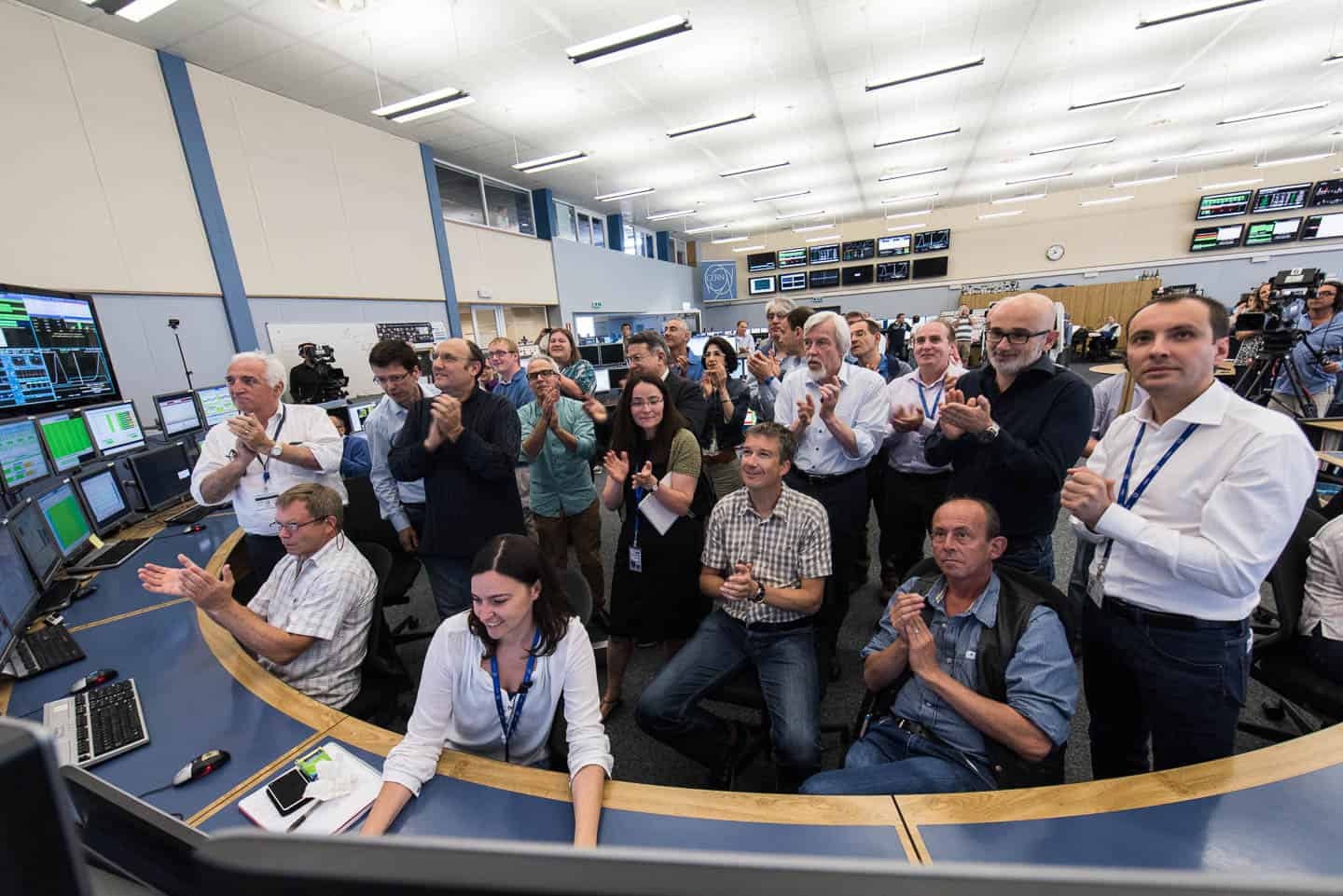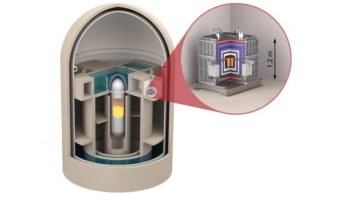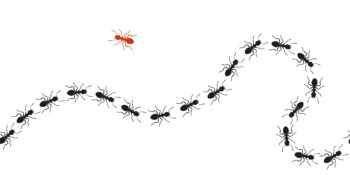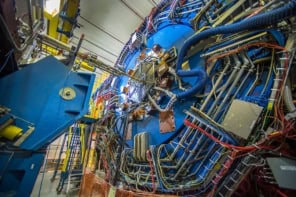
By Hamish Johnston
Earlier today the first data of the 13 TeV run of the Large Hadron Collider (LHC) at CERN were collected by all four of the Geneva-based collider’s main experiments. I was up early this morning (8.00 a.m. Geneva time) and followed all the action live via a webcast from CERN. After losing the beams at about 8.40 a.m. because of a faulty beam monitor, collisions in the CMS, ALICE, ATLAS and LHCb experiments were being reported at 10.40 a.m.
This marks the beginning of the LHC scientific programme at 13 TeV. Physicists hope that the new collision data will tighten up our understanding of the Standard Model of particle physics. Much more importantly, they could also reveal flaws in the Standard Model that could point to new physics.
If all goes well, over the next few years we could be blessed with important clues about the nature of dark matter and even gain a few pointers about how to reconcile quantum mechanics with Einstein’s general theory of relativity.
“We have seen the first data beginning to flow,” said CERN Director General Rolf Heuer, who added “Let’s see what they will reveal to us about how our universe works.”
What could go wrong? The nightmare scenario for particle physicists is that the LHC will deliver loads of data supporting the Standard Model and not a thing about any new physics that might lie beyond. The LHC is expected to run for at least another 20 years, so let’s hope nature doesn’t take it down that road.
Like the Queen, the 13 TeV run has two birthdays. In March, physicsworld.com’s Tushna Commissariat travelled to CERN for an opening event while the collider was preparing for collisions. She spoke to a number of physicists about their hopes and dreams for this experimental run and you can read much more in her article “Large Hadron Collider fires up in a bid to shake up the Standard Model”.



